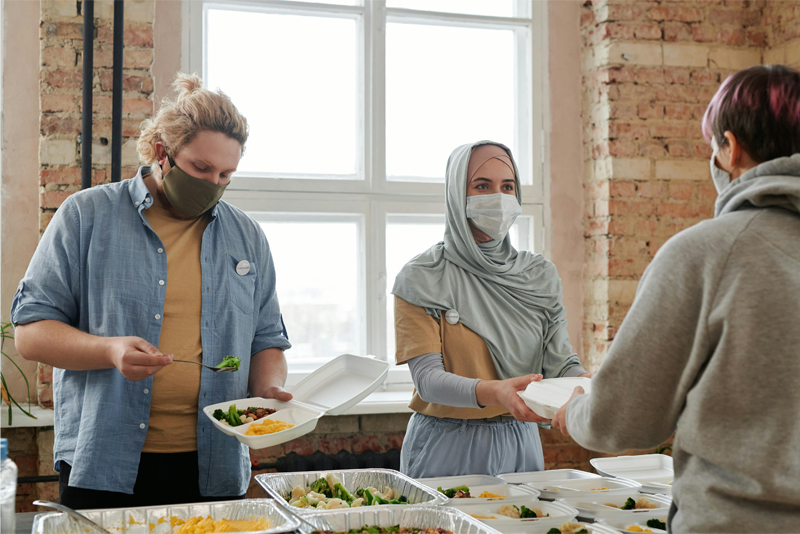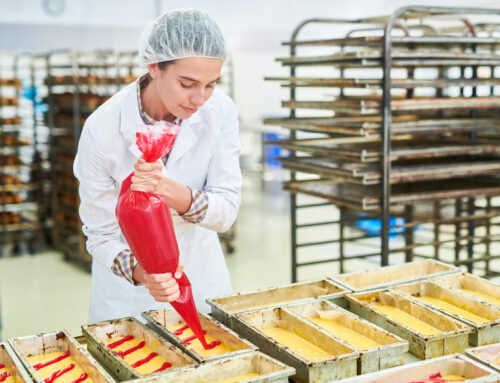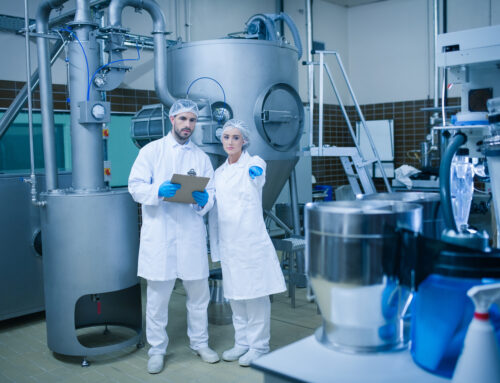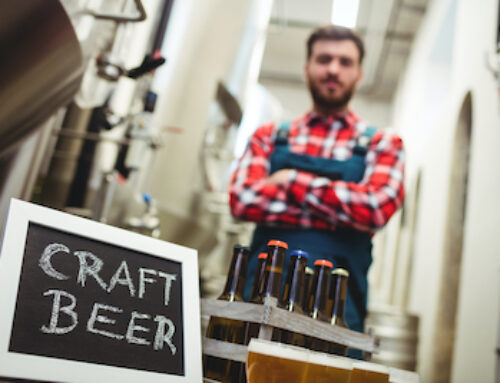Whether we’re shopping for groceries or eating at our favorite restaurants, we often take for granted that the foods we eat are safe for consumption. But keeping food safety in manufacturing a top priority requires an enormous organizational commitment from top to bottom.
Today, Manex is going to unpack what it takes to ensure food industry safety, as well as provide guidelines, tips and best practices that you can use to improve industrial food safety in your organization.

Understand Food Safety in Manufacturing
When we talk about food safety in manufacturing, we are talking about the many steps and precautions that must be taken by an organization to reliably produce food that is safe for human consumption.
Through each part of the manufacturing process, the potential exists for foodborne illness and contamination to spread. That is why everyone involved in any part of the food production process must share in the responsibility to prevent foodborne illnesses.
Industrial food safety extends beyond keeping bacteria and toxins out of food supplies. It also includes a manufacturer’s responsibility to prevent cross contamination and keep adulterations out of their products.
Food safety in manufacturing even includes an organization’s responsibility to label their products accurately, and to avoid making unsubstantiated claims about a product.
At its core, industrial food safety must be proactive, and involved in each step in the food manufacturing process. Food safety should not be something you consider once trouble has been found. It must be ingrained into the daily activities of an organization.
General Guidelines for Industrial Food Safety
No matter what type of food production you are involved in, there are a few basic guidelines that everyone should follow to ensure industrial food safety in your organization.
Cleaning and Sanitation
Because our hands touch so many different surfaces each day, they are extremely prone to picking up germs, bacteria, and other microorganisms that have the potential to contaminate food products.
That is why the most basic cornerstone of industrial food safety is proper hand washing and hygiene. Each person working with any type of food product should always:
- Thoroughly wash their hands and forearms for at least 30 seconds before and after handling and preparing any type of food product or component.
- Use hot, soapy water to wash surfaces and equipment before and after usage.
- Sanitize surfaces before and after usage.
- Rinse fresh and raw food products with cold, running water.
Food manufacturing organizations whose work involves the slaughtering of animals should also follow some additional guidelines:
- Employees working with animal carcasses should always wear personal protective equipment (PPE) including aprons, gloves and masks.
- Always remove animal feces and take extra caution to follow general food safety guidelines to avoid cross contamination.
- Change clothes when the slaughtering process is complete.
Storing and Organizing
Proper storage of items throughout food manufacturing facilities is vital to preventing cross contamination. Whether slaughtering, preparing, or cooking food items, employees should:
- Ensure that raw materials such as meat, seafood, and poultry are kept separated from any other foods.
- Avoid using the same utensils and cutting boards for raw meats and other foods. Always use separate utensils.
- Properly store food items in containers with lids to avoid cross contamination.
- Keep cleaning and industrial chemicals far away from anywhere food is stored or prepared.
Food Safety Temperatures
Industrial food safety extends to the temperature foods are cooked at, as well as stored at. Ensuring food items are cooked to the proper temperature kills hazardous bacteria and microorganisms that can cause food borne illness.
To ensure that food items are cooked properly, it is essential to use a food thermometer to check temperatures.
Below are guidelines for minimum internal temperatures for different food types:
- Poultry, casseroles, stuffing, and leftovers must be heated to at least 165° F.
- Ground meats and eggs should be heated to at least 160° F.
- Meats including fresh beef, veal, lamb, pork, ham and fish should be heated to 145° F.
- Vegetables, grains, and legumes that are to be held hot should be heated to at least 135° F.
In addition to cooking food to the proper temperature, storing food at the right temperatures is another key step in preventing foodborne illness. Some important food storage principles include:
- Proper thawing of frozen food should be done in a refrigerator, microwave or in cold water. Avoid thawing on a countertop.
- Perishable foods should be frozen or refrigerated within 2 hours.
- Routinely check that refrigerators and freezers are functioning properly.
Water in Industrial Food Safety
Water is a critical component in every food manufacturing process, and it is essential to exercise care to prevent water contamination. Some tips for keeping water clean include:
- Regular testing and treatment for both microbiological and chemical contaminants.
- Segregated systems for potable and nonpotable water.
- Filtering or boiling whenever possible.
Create a System for Hazard Analysis and Critical Check Points (HACCP)
A complete approach to food safety in manufacturing should also include a proactive identification of potential safety hazards throughout the manufacturing process. Critical control points include things like cooking times, temperatures, and cooling times.
Establishing limits for these practices, along with a method for monitoring them helps create a comprehensive safety net that will help to spot potential hazards before they become a serious issue. In addition to identifying potential hazards, an HACCP plan should also describe the steps needed to correct any deviations from the standards set.
Five Tips for Implementing Food Safety Manufacturing Principles in Your Workplace
To make implementing a food safety program easier in your workplace, consider the following tips:
- Establish Prerequisite Programs
Prerequisite Programs (PRPs) are like the building blocks of a strong food safety program. They are typically broad in scope, and can be used to establish baselines for hygiene and address potential hazards throughout the manufacturing process. PRPs can be set up for things like sanitation, pest control, and employee hygiene.
- Create a Food Safety Team
Tap into your workforce and set up a food safety team who can share in the responsibility of developing a food safety program, as well as overseeing that food safety guidelines are being followed. A food safety team should be diverse, including representatives from different departments of the organization.
- Invest in Employee Training
Your workforce is your first line of defense in the fight for food safety. Investing in training programs that will instill good food safety and hygiene are essential to keeping your facilities clean and your products safe. Employees must be accountable, and hold each other to the highest standards.
- Periodically Review and Audit Your Processes
Regularly conducting audits of your food safety process is essential to running a tight ship. Detailed record keeping is a key aspect of many common food safety frameworks, like HACCP. Keeping notes and records can provide clues to how effective your procedures are, and alert you to potential issues – before they become a serious problem.
- Consider Working with a Food Safety Manufacturing Consultant
Food safety regulations can be complex, which is why many organizations choose to work with a reputable food safety manufacturing consultant to create a custom approach to their food safety procedures. Working with a consultant allows you to tap into their industry expertise, and identify areas of potential risk – and improvement – unique to your operation.
Conclusion
Food safety is a responsibility that everyone involved in the manufacturing of food must take seriously. A lapse in industrial food safety can have severe consequences, but it doesn’t have to be a burden. When done properly, food safety can become a competitive advantage, and ensure that your organization prospers.
At Manex, we have been serving the needs of manufacturers in Northern California for nearly 30 years, bringing our expertise to dozens of organizations like yours. We can help you develop a customized food safety program that not only meets, but exceeds the most rigorous standards for food safety in manufacturing.
Don’t wait for a potential disruption to your operations to take food safety seriously. Contact Manex today at info@manexconsulting.com or call 877.336.2639, and let us help you take your industrial food safety to the next level.


